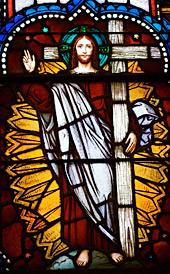What was the inspiration for combining the Old Testament and New Testament Scriptures?

Traditionally, Old Testament Scripture has been cited as prefiguring events in the New Testament Scripture and the New Testament Scripture frequently refers to Old Testament prophecies. This tradition was established by Jesus, who, throughout the New Testament Scriptures, is cited as quoting the Old Testament Scriptures. He is noted as saying, These are the words, which I spoke to you, while I was yet with you, that all things must need be fulfilled, which are written in the Law of Moses, and in the prophets, and in the Psalms concerning me. (Lk 24:44-5) This is a core tenet of Christianity: Jesus was the fulfillment of the Old Testament prophecies of the promised Messiah.
In the oratorio tradition, Scripture is often used in librettos. Charles Jennens, the librettist for Handel's Messiah, used Old Testament Scripture to expound on Jesus's birth, suffering, and Resurrection.
The Rosary for World Peace takes this approach a step further by using the template of the Rosary to prefigure each of the New Testament Mysteries and Scripture with Old Testament Scripture. In effect, The Rosary for World Peace provides a comprehensive, dramatic, Scriptural mirror by placing the arranged Old Testament Scripture before the New Testament Scripture throughout the work.
The Sorrowful Mysteries:
The Crucifixion of Jesus
Aria—Holy Spirit
I will Make It as
the Mourning of an Only Son.
(Amos 8:10)
The Sun shall Go Down at Midday,
I will Make the Earth Dark
in the Day of Light.
(Amos 8:9)
I will Turn your Feasts into Mourning,
and All your Songs into Lamentation.
(Amos 8:10)
I will Make It as
the Mourning of an Only Son.
(Amos 8:10)



